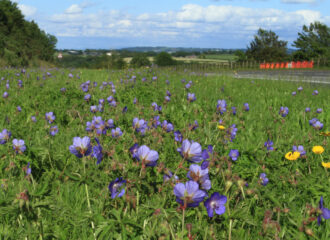Some of our non-natural ecosystem components have important roles to play, not only in hosting a relatively rich fauna and flora compared to some of their natural/semi-natural counterparts, but also in the education of children. Most children in the UK live in urban environments surrounded by non-natural habitats and with limited opportunities to visit more distant semi-natural nature reserves, even if they decided that they would like to. Fo these children to grow up caring about the biodiversity of Wales, they must be given the opportunity to engage with, learn about, and value the wildlife on their doorsteps. The future of the semi-natural habitats in Wales will depend on future generations learning to value them and the non-natural parks, gardens and brownfield sites in our towns and cities have a key role to play in this. Several of these important non-natural ecosystem components are described in the sections below. However, as the habitats covered here exist as a consequence of modification, where there are different states in terms of biodiversity and cultural interest, in this section we have referred to these ‘optimal states’ and ‘suboptimal states’.
Non-natural ecosystem components

Urban terrestrial habitats
Urban terrestrial habitats are undervalued, both for their current natural history importance and as a teaching resource. There is no more powerful illustration of habitat succession than the image of nature reclaiming a former industrial site. In fact, brownfield sites and abandoned industrial areas are important both as reference points for our cultural history and…

Constructed waterways and standing waters
The category includes canals, drains and ditches, reservoirs, dams and ornamental lakes and ponds. All of these can provide havens for wildlife in built-up or heavily modified landscapes. Many ornithologists, for example, cultivated their interest as children at their local reservoir. Canals and drainage ditches are particularly important refuges for aquatic plants and invertebrates, and…

Forestry plantations
Most forestry plantations in Wales are on higher ground and valley sides, and typically comprise non-native varieties of larch, pine or spruce. Some forestry areas, such as Coed-y-Brenin and the Afan Valley, have developed into centres for outdoor leisure pursuits such as trail biking, orienteering, cross-country running etc. From a biodiversity perspective, some of the…

